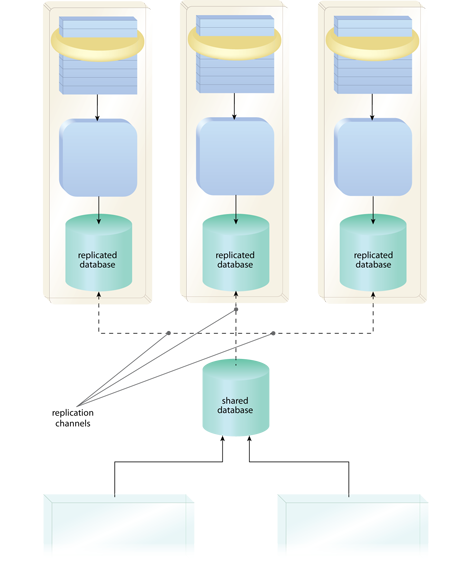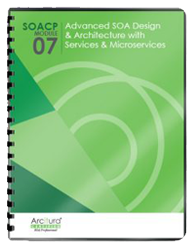SOA Patterns > Service Implementation Patterns > Service Data Replication
Service Data Replication (Erl)
How can service autonomy be preserved when services require access to shared data sources?

Problem
Service logic can be deployed in isolation to increase service autonomy, but services continue to lose autonomy when requiring access to shared data sources.
Solution
Services can have their own dedicated databases with replication to shared data sources.
Application
An additional database needs to be provided for the service and one or more replication channels need to be enabled between it and the shared data sources.
Impacts
This pattern results in additional infrastructure cost and demands, and an excess of replication channels can be difficult to manage.
Principles
Architecture
Inventory, Service

By providing each service its own replicated database, autonomy is increased and the strain on the shared central database is also reduced.
Related Patterns in This Catalog
Composition Autonomy, Distributed Capability, Legacy Wrapper, Proxy Capability, Redundant Implementation
Related Service-Oriented Computing Goals
This pattern is covered in SOACP Module 7: Advanced SOA Design & Architecture with Services & Microservices.
For more information regarding the SOA Certified Pofessional (SOACP) curriculum,
visit www.arcitura.com/soa.
This page contains excerpts from:
SOA Design Patterns by Thomas Erl
(ISBN: 0136135161, Hardcover, Full-Color, 400+ Illustrations, 865 pages)
For more information about this book, visit www.arcitura.com/books.

